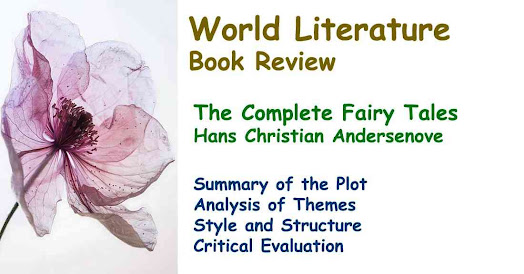 |
| Book Review 25 - The Arabian Nights by Anonymous |
Title: The Arabian Nights (One Thousand and One Nights). Author: Anonymous (Various authors and translators). Publication Details: Multiple editions exist; translated by Sir Richard Burton, Edward Lane, and others. The stories originated in oral tradition, with the first recorded versions dating back to the 9th century. Genre: Classic Literature, Folk Tales, Fantasy.
Introduction
"The Arabian Nights," also known as "One Thousand and One Nights," is a classic collection of Middle Eastern and South Asian folktales, legends and stories. Compiled over centuries by various authors, translators and scholars, the tales were first put together during the Islamic Golden Age. The overarching narrative follows the clever Scheherazade, who tells a series of stories to delay her execution by the king Shahryar. Each night, she leaves the tale unfinished, compelling the king to keep her alive for another day to hear the conclusion.
Summary
of the Plot
The frame story revolves around King Shahryar, who, after being betrayed by his first wife, vows to marry a new woman each day and execute her the following morning. Scheherazade, the daughter of the vizier, willingly offers herself to marry the king. On their wedding night, she begins telling him a captivating story but leaves it unfinished, prompting the king to spare her life to hear the ending. This pattern continues for one thousand and one nights, during which Scheherazade tells an array of stories— ranging from romances and adventure to moral lessons and dark humor. The tales are often interlinked, with characters telling stories within stories, creating a layered narrative that explores themes of fate, justice, love and human folly.
Analysis
of Themes
"The Arabian Nights" delves into various themes, including the nature of storytelling, fate versus free will and justice. The act of storytelling itself becomes a means of survival and a powerful tool to challenge the oppressive forces. Through her tales, Scheherazade not only entertains the king but also subtly critiques his cruelty and reveals the value of mercy, forgiveness and wisdom. Another recurring theme is the tension between fate and human agency, as characters frequently encounter situations where destiny seems inevitable, yet their actions still shape the outcome. Justice and morality are also central to many tales, with villains often meeting their downfall due to their misdeeds, while the virtuous find redemption and reward.
Style
and Structure
1.
Narrative Style
The narrative is framed as a story within a story, creating a multi-layered structure. This technique engages the reader by building suspense, as Scheherazade’s survival depends on the continuation of her tales. The use of embedded narratives adds depth and variety to the text, as each story can stand alone or connect to others through thematic links.
2.
Language and Tone
The language of "The Arabian Nights" varies widely depending on the translator, but it is generally characterized by its rich, ornate style and descriptive passages. The tone can shift dramatically from humorous to tragic, often within a single story, reflecting the complex nature of the human experience.
Critical
Evaluation
1.
Strengths
One of the greatest strengths of "The Arabian Nights" is its vast and diverse array of stories that can appeal to a wide audience. The frame story of Scheherazade adds a compelling meta-narrative that binds the collection together, giving it a sense of cohesion. The tales' universal themes, such as love, revenge and justice, resonate across cultures and time periods, making the work a timeless classic.
2.
Weaknesses
The collection's episodic nature can be seen as a weakness, as some stories may feel disconnected or lack resolution. Furthermore, the translations and adaptations vary significantly in quality, with some editions losing the nuances of the original language. Certain tales may also include outdated social attitudes that can be uncomfortable for modern readers.
Conclusion
"The Arabian Nights" remains an influential and enduring work of world literature. Its captivating storytelling, rich cultural background and exploration of human nature continue to engage readers. While some elements may feel antiquated, the themes and narratives resonate across generations, cementing its status as a literary classic.
References
Burton,
Richard F., trans. The Book of the Thousand Nights and a Night.
Lane,
Edward William, trans. The Arabian Nights Entertainments.
Irwin, Robert. The Arabian Nights: A Companion.
Frequently
Asked Questions (FAQs)
What
is "The Arabian Nights" about?
It is a collection of Middle Eastern and South Asian folktales framed by the story of Scheherazade, who tells stories to a king to delay her execution.
Who
is Scheherazade?
Scheherazade is the heroine who narrates the tales in "The Arabian Nights" to save her life by captivating King Shahryar with her storytelling.
What
themes are explored in the stories?
Common themes include storytelling, fate versus free will, justice, morality, love and revenge.
Are
all the stories connected?
While each story can stand alone, they are connected by the overarching narrative of Scheherazade's nightly storytelling.
How
many stories are in "The Arabian Nights"?
The number of stories varies by edition, but traditionally, it is said to contain one thousand and one tales.









